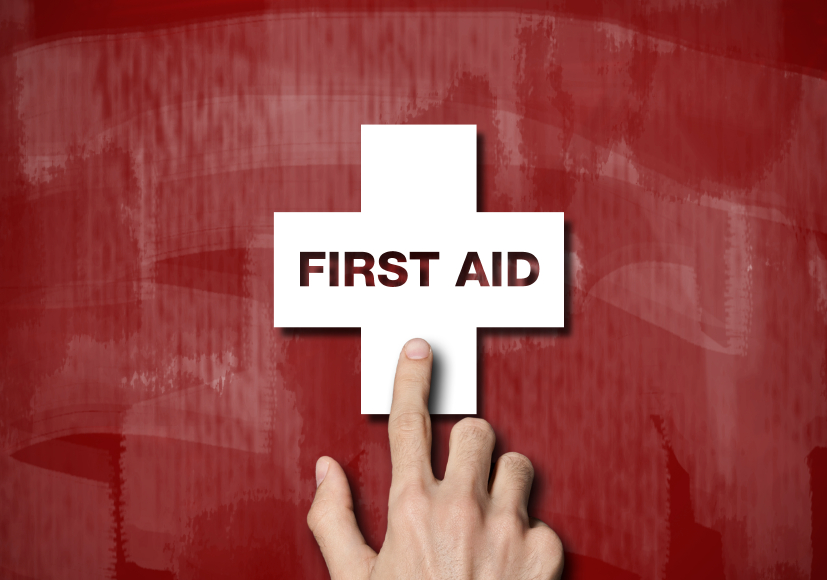
It’s many people’s nightmare to be out in the wild and in need of survival first aid. If you know how to handle the situation properly though, whether it’s you in need of help or whether you’re in need of the knowledge to help another, survival first aid doesn’t have to be so scary.
The thing is, outdoor survival is a tricky game at times, but it’s a game that can definitely be mastered through information, knowing your environment, having the right survival gear, and most importantly, knowing survival first aid.
Where do you start though? Well, here at Mpora we thought we’d put together a post packed with all you need to know on survival first aid. Have a read and you could well feel a whole lot safer next time you’re out in the wild.
What Is A First Aid Kit?
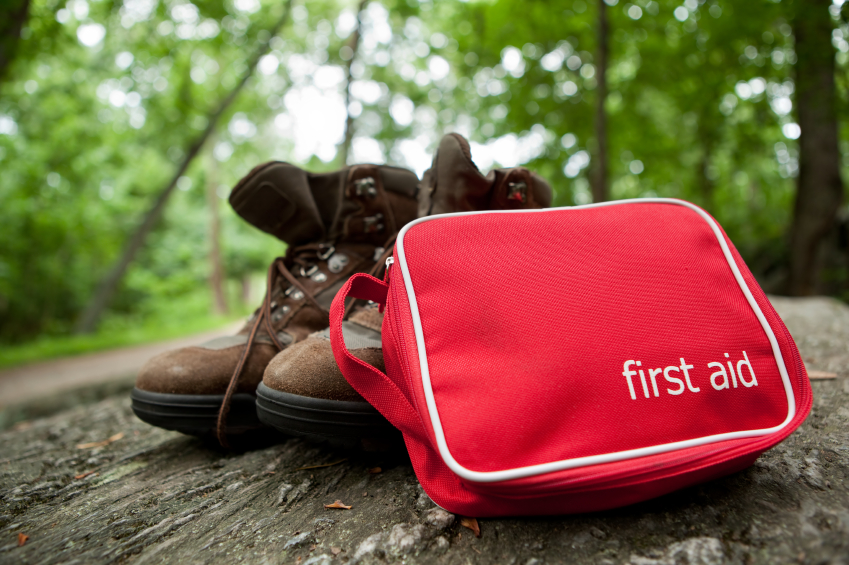
A first aid kit is simply a bag or a container which can contain anything from a few helpful bandages and plasters to a whole abundance of medical supplies. In all honesty though, the more you’ve got in that survival first aid kit, the better. Prepare for the worst and you’ll always be ready if it comes around.
It’s also worth noting here that a survival first aid kit and a survival kit are different things. While the former will be filled with supplies for a medical emergency, the latter will feature survival gadgets, tools and maybe even survival knives for outdoor emergencies – think wire cutters, pliers, waterproof matches.
What Should Be In My Survival First Aid Kit?
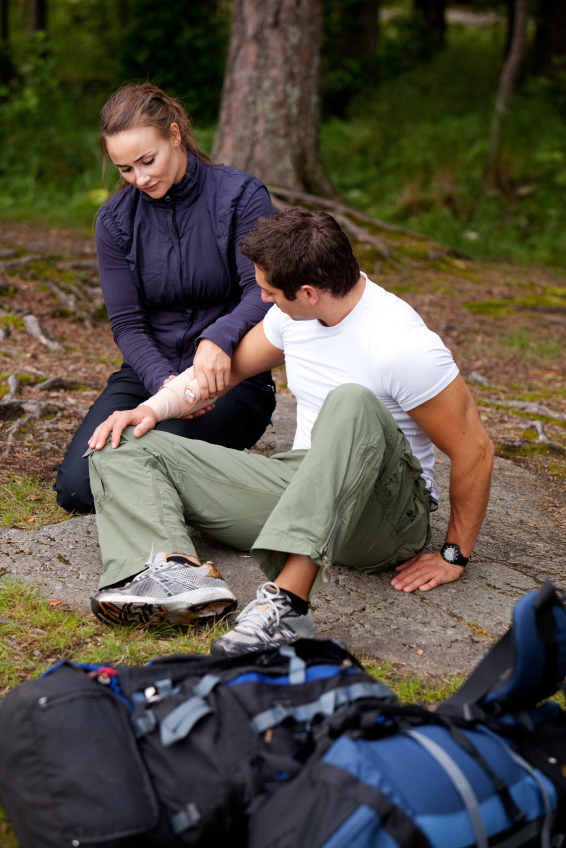
While you can buy survival first aid kits on the market, putting together your own first aid kit is a cost-effective way to make sure you’ve got everything you need.
The good thing about buying a survival first aid kit though, is that it’ll likely come with all of these essentials and an emergency advice booklet as well, so for first timers it could be a good idea to purchase a basic kit and then build upon it from there.
Here’s a basic idea of some of the essentials you should bring with you up the mountain:
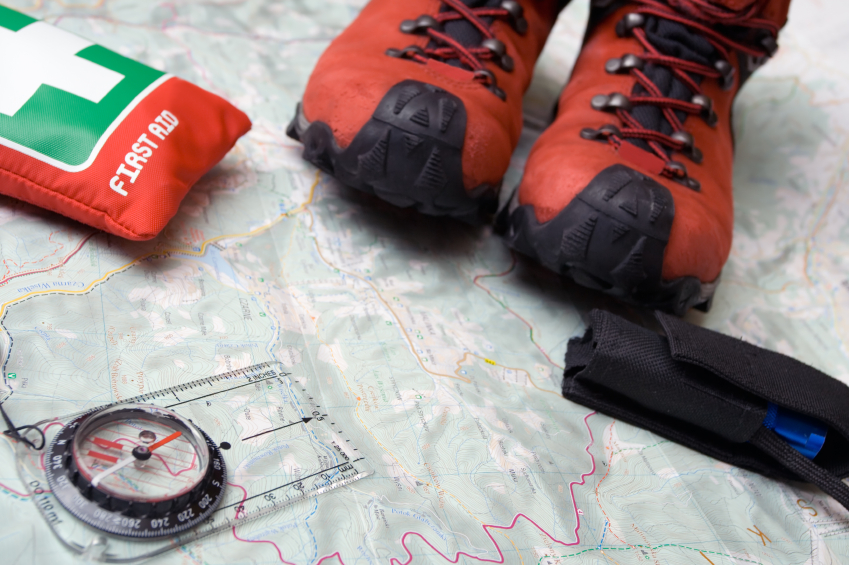
- Duct tape – for closing up wounds
- Steristrips – for closing up wounds
- Gauze
- Antibiotic cream
- Anti-blister cream
- Disinfectants
- Pain killers
- Aspirin
- Anti-allergens
- Sterile needles
- Surgical cutting tool
- Vaseline
- Scissors
- Sun Cream
- Sterile dressings
- Plasters
- Pads to fit a range of cuts and wounds
- Vinyl gloves
- Alcohol wipes
- Drying Wipes
- Survival Blanket
- Splinter tweezers
There’s no point having a first aid kit if you don’t know how to use it remember, so familiarise yourself with everything you own, know its purpose, and possibly even bring along a first aid tips booklet for emergencies.
Where To Start When Delivering Survival First Aid?
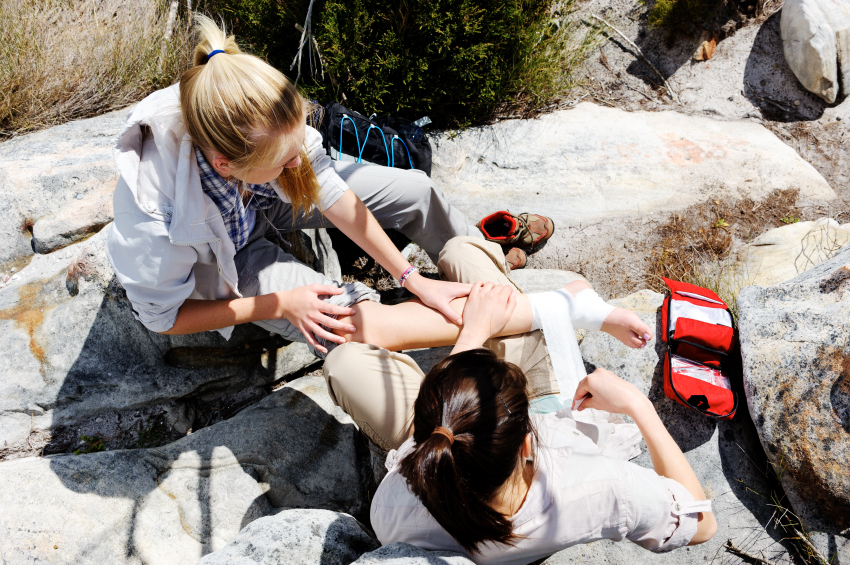
We should clarify at this point, as we’re sure you’re well aware, that everything said in this article is only a guideline and the best way to actually learn first aid is to do a course, something that would come in handy not only in the wild but also in plenty of job interviews too!
It’s useful to know where to start when you are charged with delivering survival first aid, and even before that there are a few things to consider. You need to make sure you stay calm, in control and don’t panic, or else you won’t be able to help and could end up in need of help yourself.
Once you’ve got yourself sorted, assess whether the casualty is in a safe environment, or whether they are causing a blockage for anyone else. If they’re in a safe and secure place, great, if not, and if possible with regards to the severity of the injury, move them.
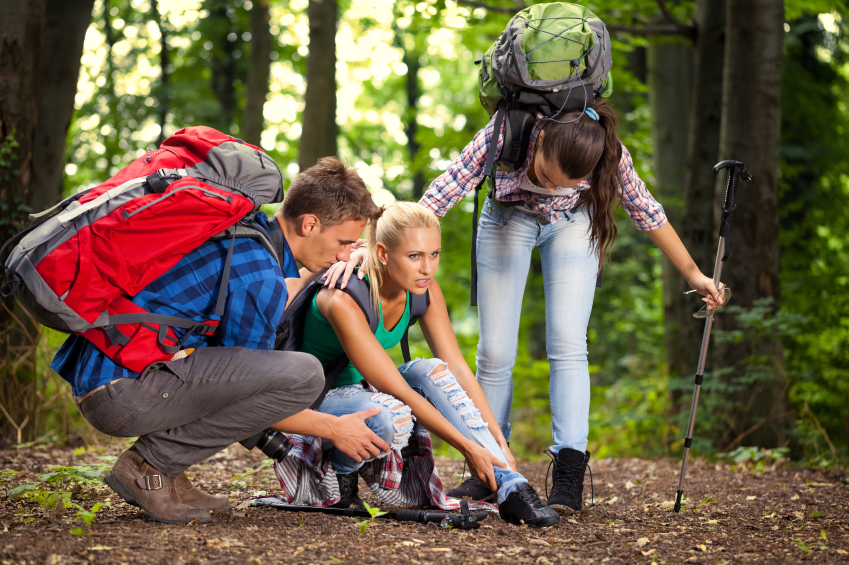
Next up, check their breathing and make sure it’s not being impaired by their tongue – a common occurrence if they’ve passed out for any reason. To clear the casualty’s airway, tilt their head and lift their chin, as this will ensure the tongue is not a blockade. If they’re not breathing, begin mouth-to-mouth artificial respiration immediately.
After checking their breathing, your next best bet is to put the casualty in the recovery position; on their side, with their top leg at a right angle to their body and their head laying sideways, as featured in the image below. Needless to say, if there are any bone breakages involved at this point, be very careful and try and avoid moving the casualty.
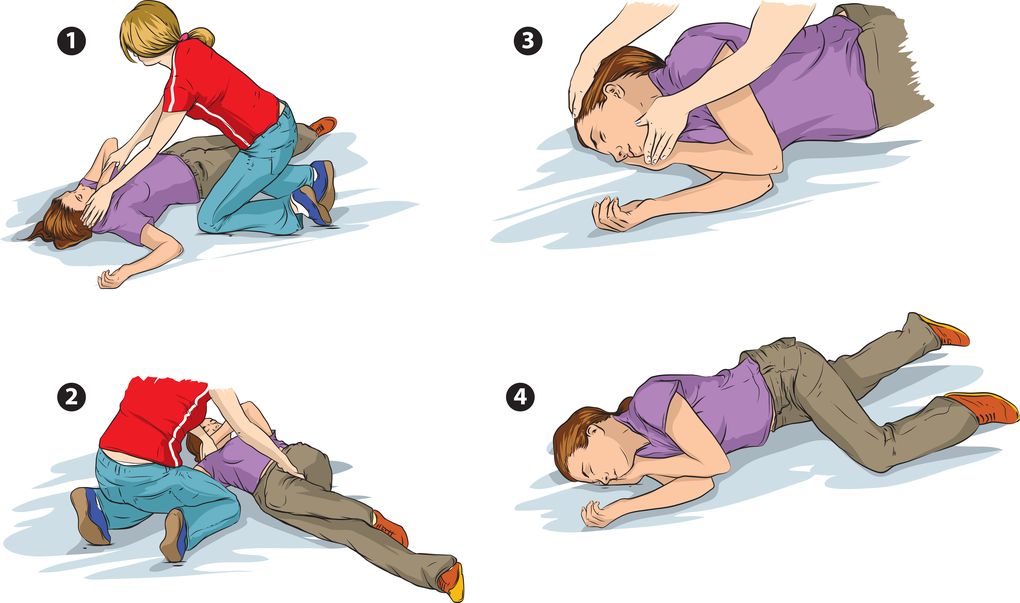
Stopping any bleeding is another essential, and one that can be calmly and quickly dealt with at the time. Simply put pressure on the sides of the wound and then the wound itself with a sterile dressing or similar, ensure that the wound isn’t infected, and then cover it. Proceed to raise the wound above heart level.
If at any point during the process the casualty has gone into shock, it’s important to try and calm them down, as this will leave them feeling even weaker and drain their energy. An emergency blanket can often help here.
What Not to do in Survival First Aid
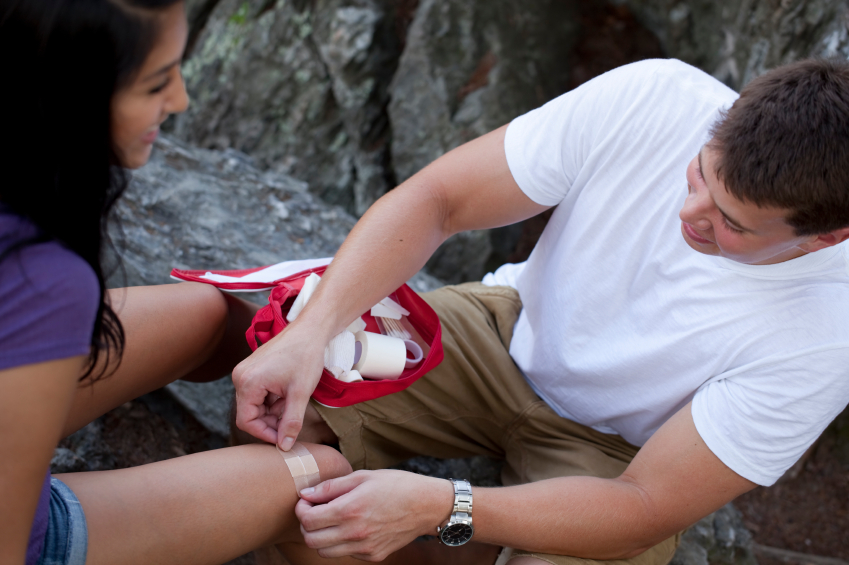
If you don’t know what you’re doing in an emergency situation, you can often make things worse. That’s why you need to know your stuff before you head out.
For example, make sure you don’t close up an open wound before cleaning it, or you could end up dealing with an infection beneath shut off skin. It’s also a risk to clean a wound in river water because it could get infected by germs, so you’re best to use drinking water if possible. This is more important the longer you’re planning to be out in the wild, as if you’re out for a week or so, an infection really has the time to take hold.
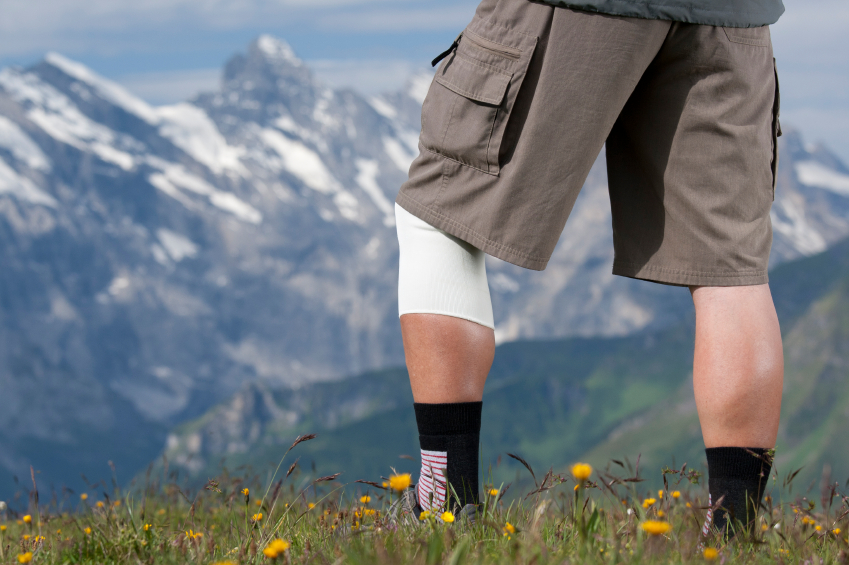
You can tell if you have an infection as the area around it will have swelling, be red and oozing pus. If you have got an infection treat it with antibiotic cream, and if the area around it has indeed closed up, you’re going to need to reopen it with a knife or other tool.
Make sure you don’t ignore any cuts or small wounds that you have, either. Get everything cleaned and covered up to avoid infection.
Like any circumstance, it’s best to avoid forming a large crowd around the casualty and don’t remove any of their clothing unless imperative. Keeping warm and keeping dry is crucial to avoid hypothermia.
Blisters, Burns and Headaches
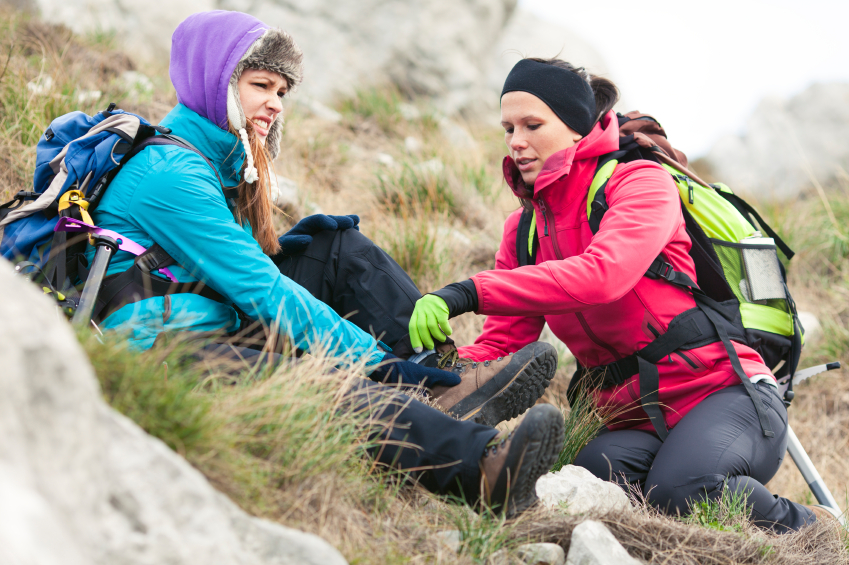
When it comes to blisters, it can often be tempting to pop them and be done with it, but given that they would then be vulnerable to infection, and as you’ve probably gathered by now, that’s not a good thing, that’s often not the best idea.
As soon as you feel a blister coming on or any discomfort when walking, stop and put some adhesive tape on the area. You should only pop a blister if absolutely necessary, but if you do need to, you should do so by washing the area and inserting a needle into the side. Clean again after, add disinfectants and then cover it up.
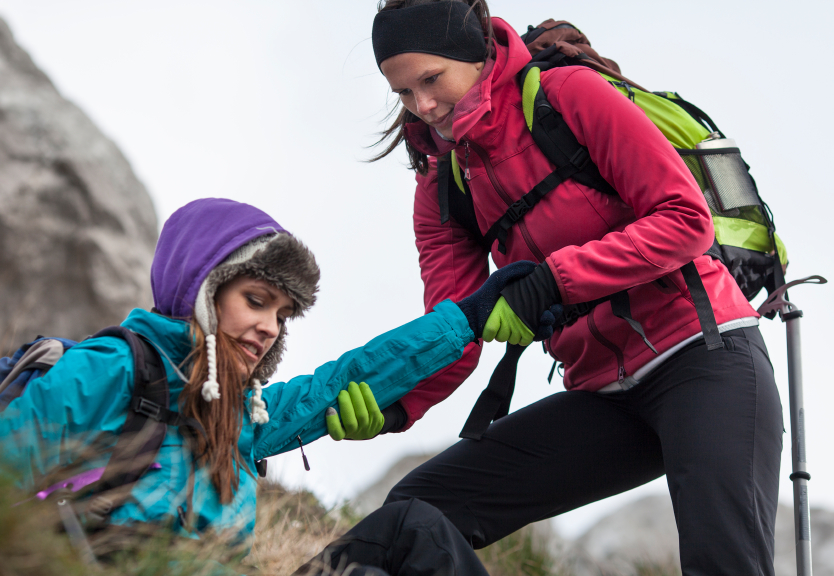
If you’ve got a headache that you just can’t kick, it’s more than likely due to neck tension, poor posture, a lack of eyewear or water intoxication, from walking for days, drinking consistent water without salt tablets. A couple painkillers should help you out here, but if you can find the source of the headache and deal with it accordingly, that’s always going to be even better.
If you’ve hit your head and find blood coming from your nose or ear, there is a chance that you may have concussion. Keep warm, take a pain killer and take it easy if this is the case. Don’t sleep with concussion.
When dealing with burns, an immediate pain killer is an essential to try and fend off the inevitable shock that follows. Gauze covered in Vaseline, then a bandage is your next move, and drinking even more water than you would have otherwise done.
Sprains, Dislocations and Fractures
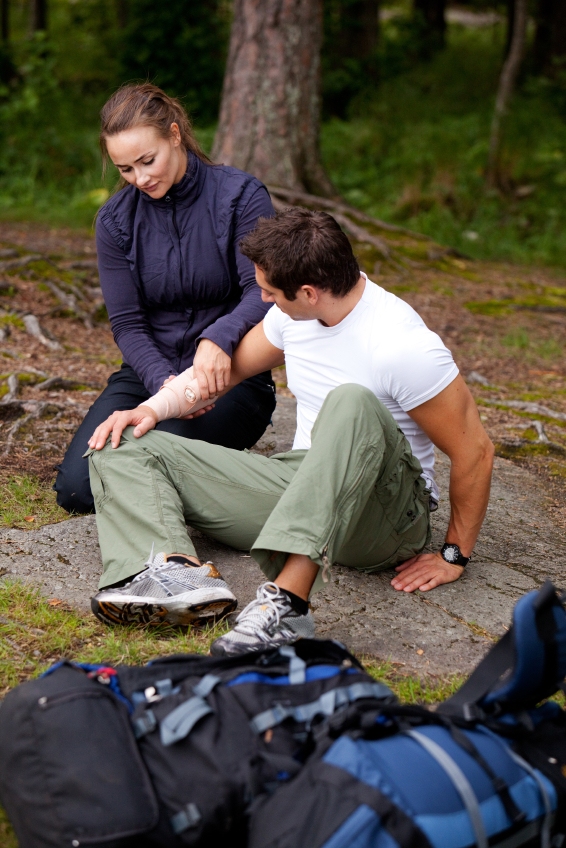
A sprain can be treated by applying the affected area with cold for a day or so, until the swelling has gone down, and then taking it easy for 24 hours and giving it a chance to recover, applying heat the next day if possible.
A dislocation is trickier as it’s not recommended that you try and pop your bone back into its pocket. Fashion a sling and get yourself to help as soon as possible.
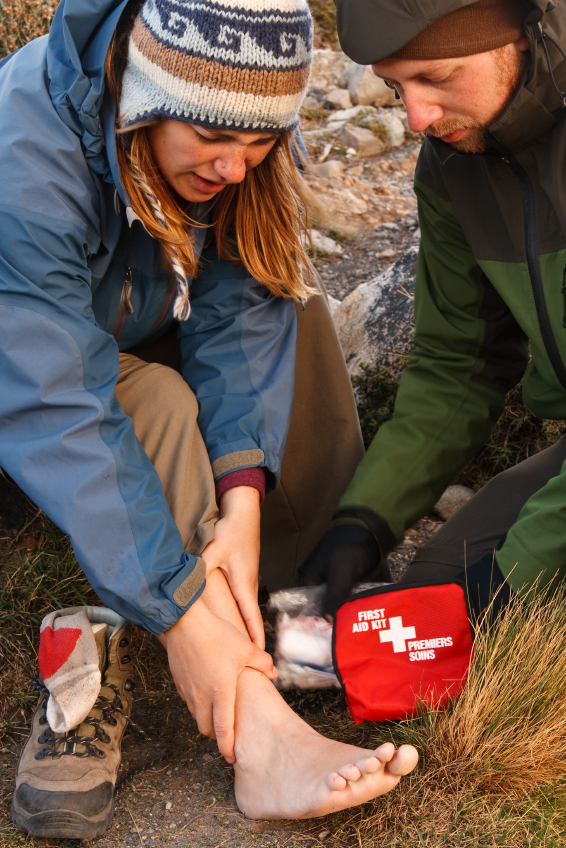
If you’ve been feeling a lot of pain in an area and can hear a grating sound or feel to that description, it’s likely you have a fracture, in which case you should splint the joints, with padded splints, above and below the fracture, making sure that you don’t cancel out your blood circulation in the process. Get medical help immediately.
As ever, the most important thing for survival outdoors is having the right gear, knowing how to use it, and being able to do so without a panic.
If you’ve got a survival first aid kit and a good bit of knowhow, you’ve got the means to turn a potentially deadly scenario into a mere inconvenience. And that can be the difference between carrying on with your adventure or ending up in a hospital bed.
You May Also Like
Essential Outdoor Survival Guide – Everything You Need To Know